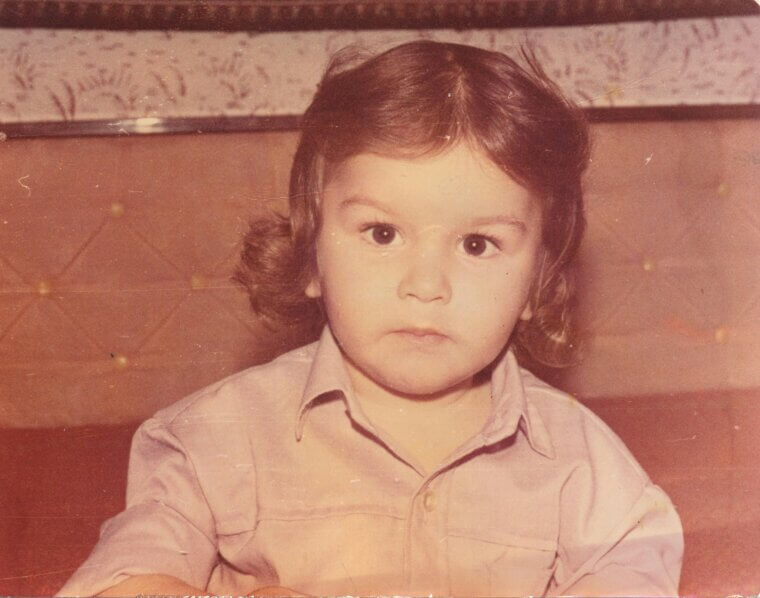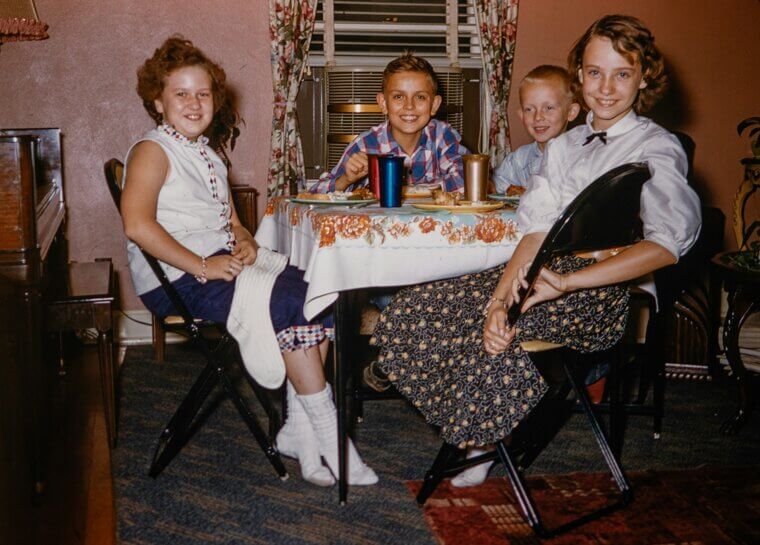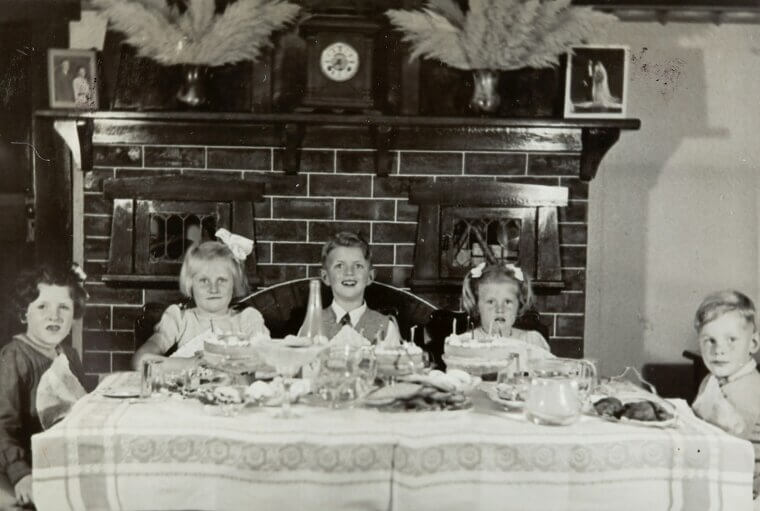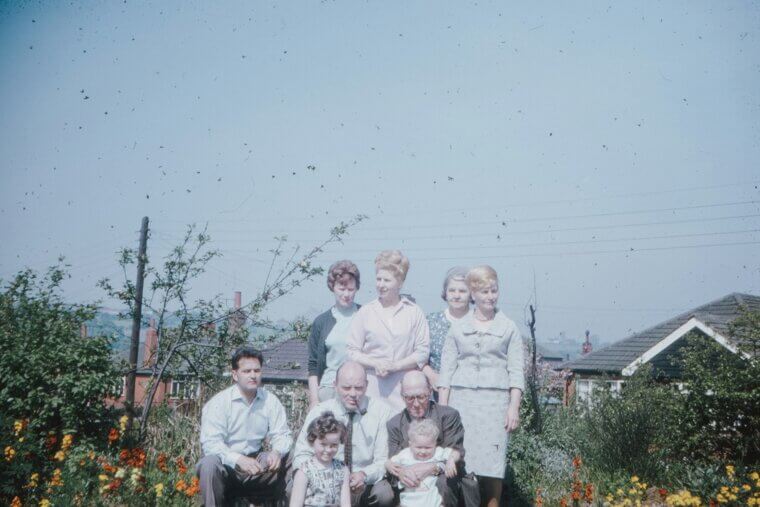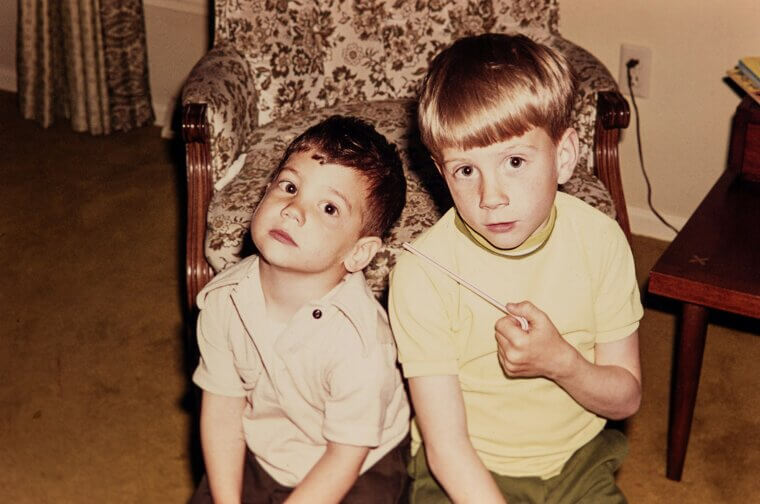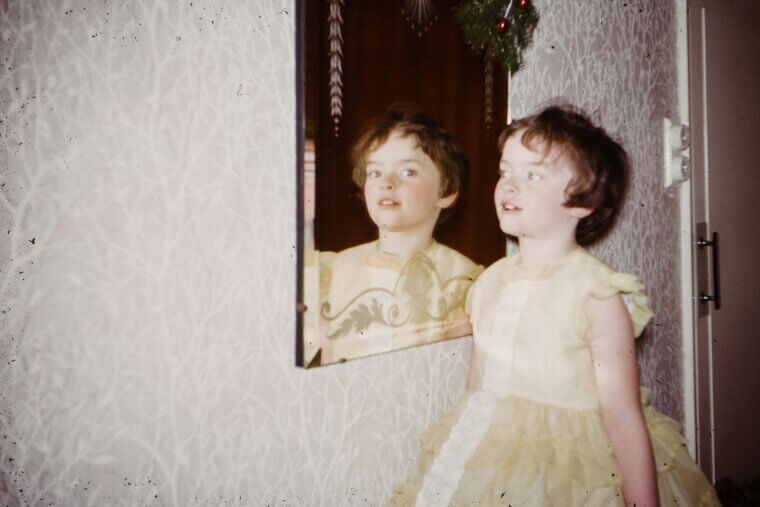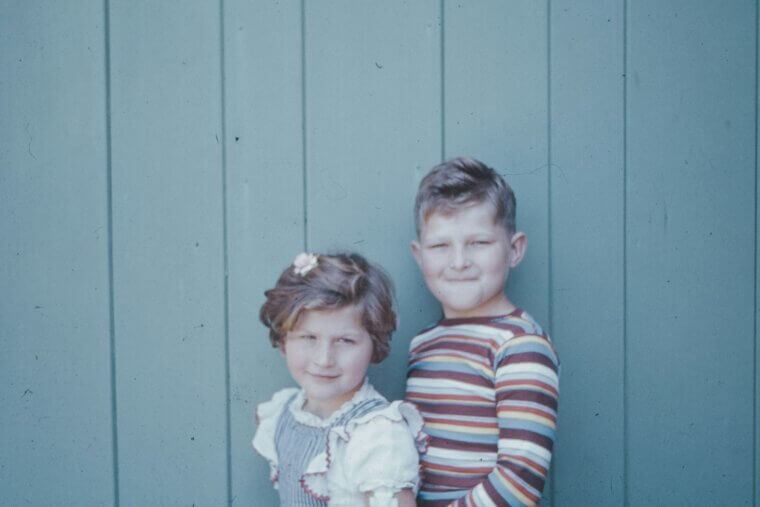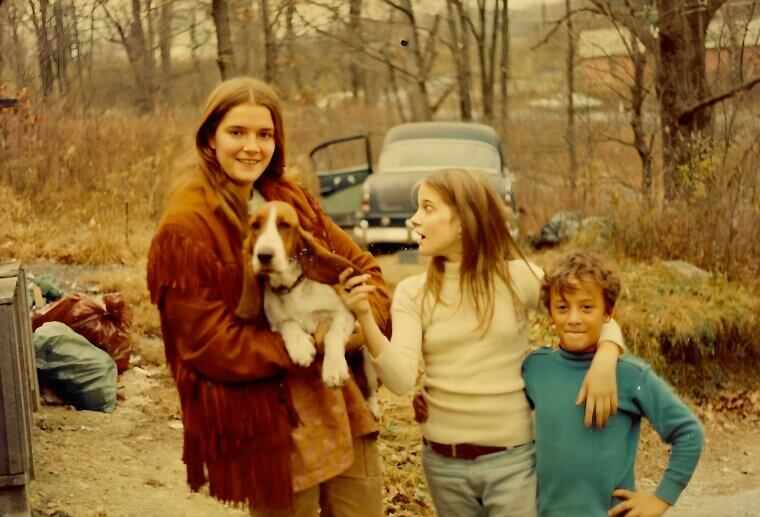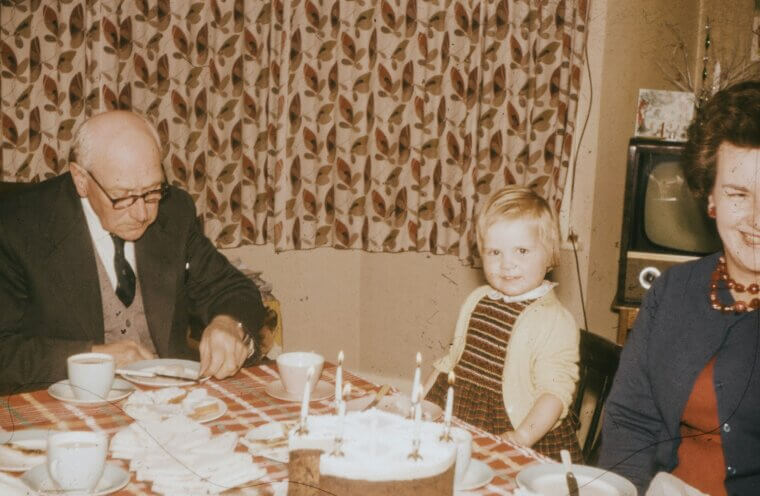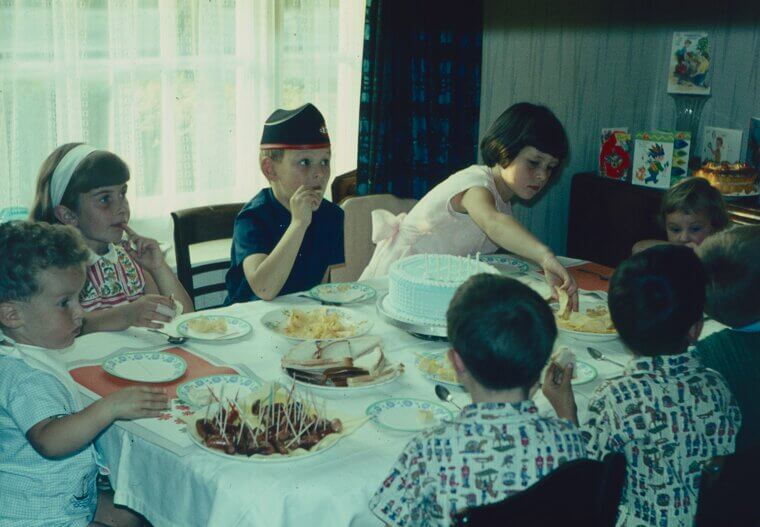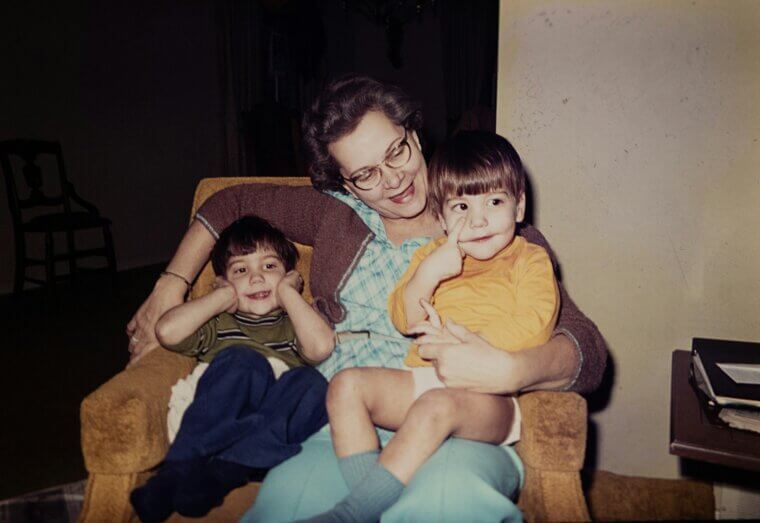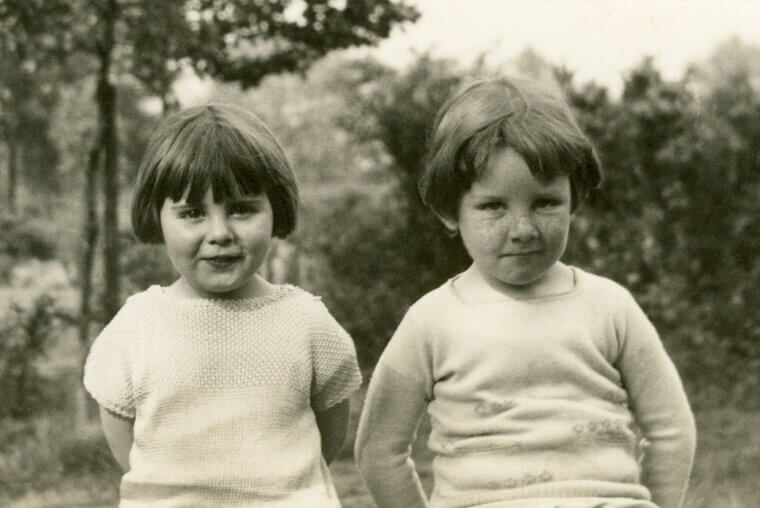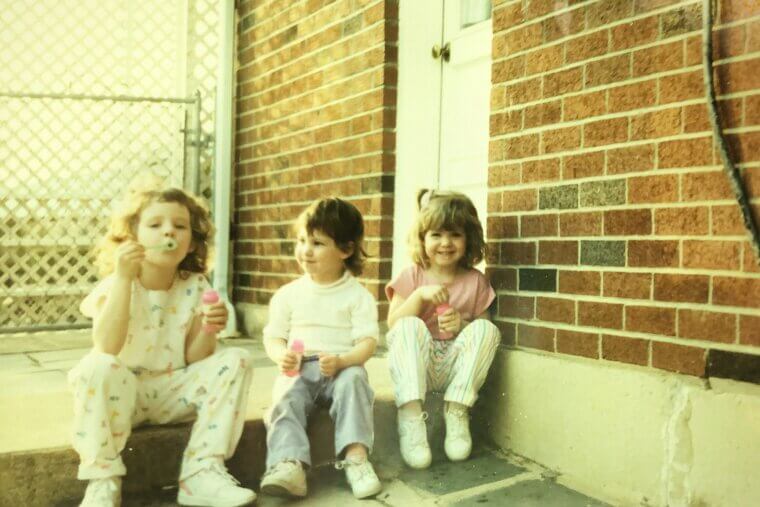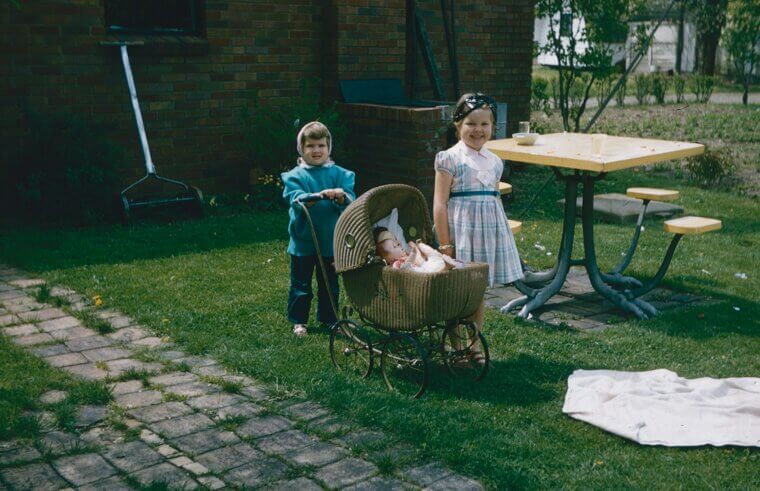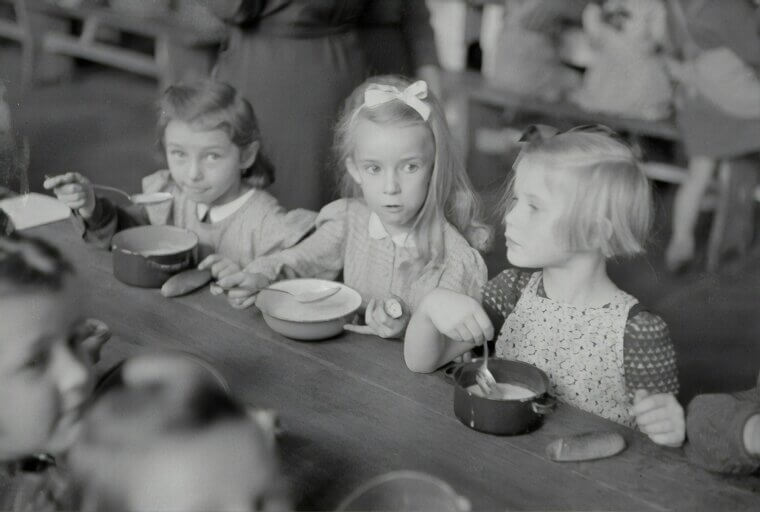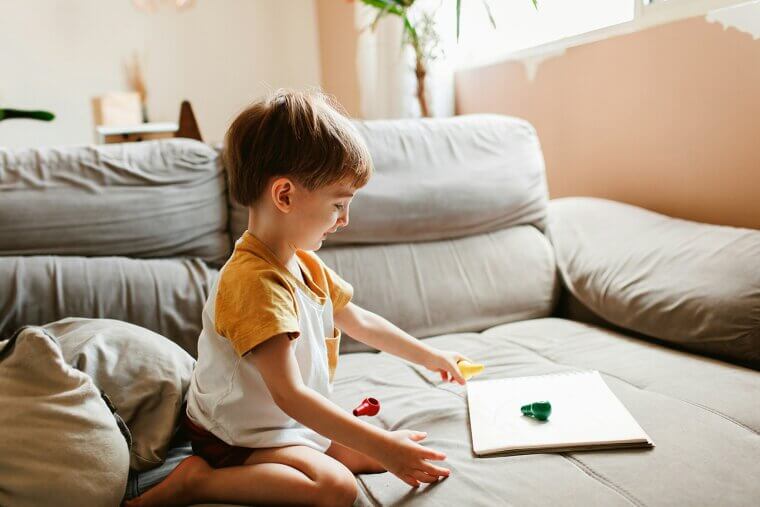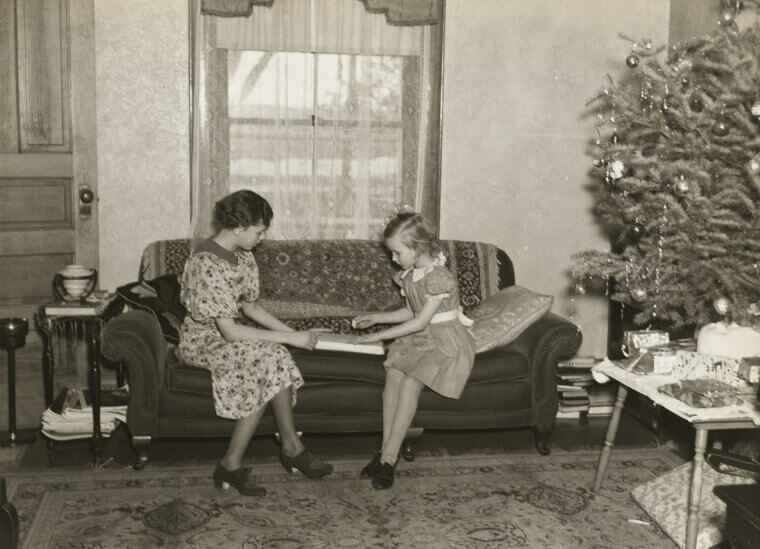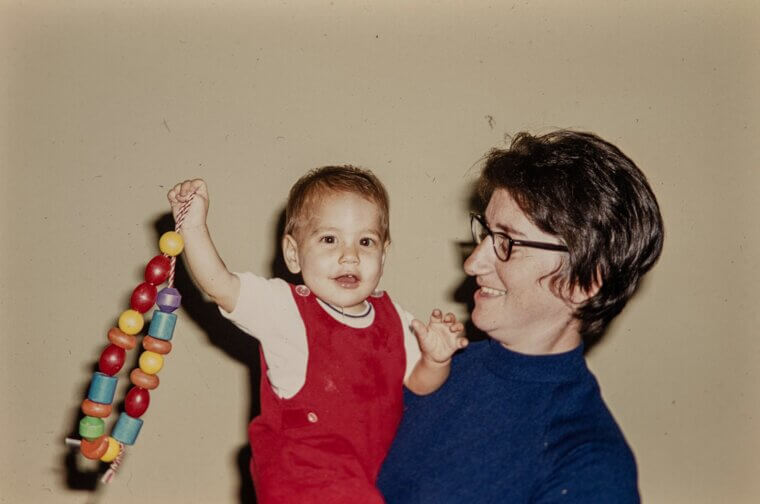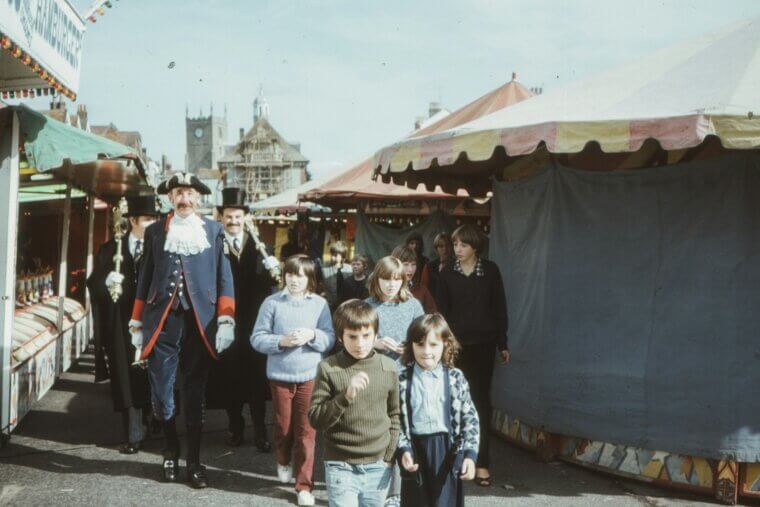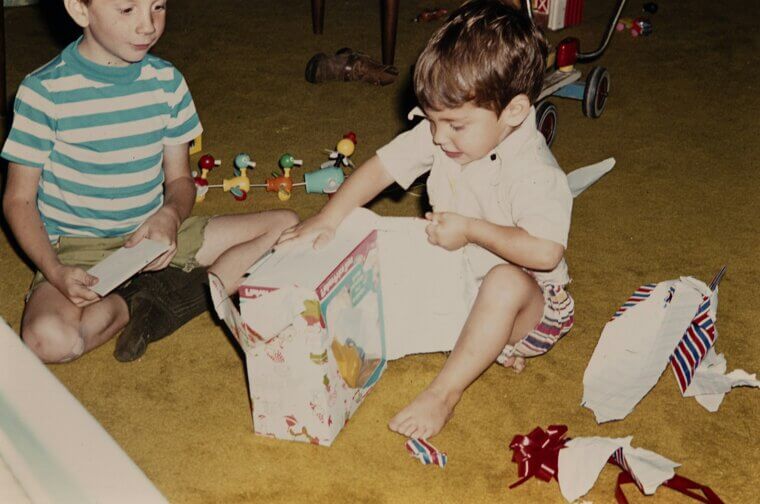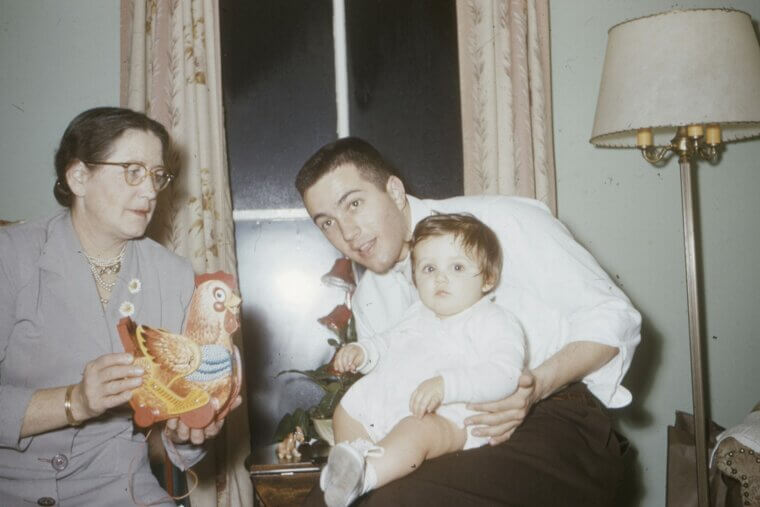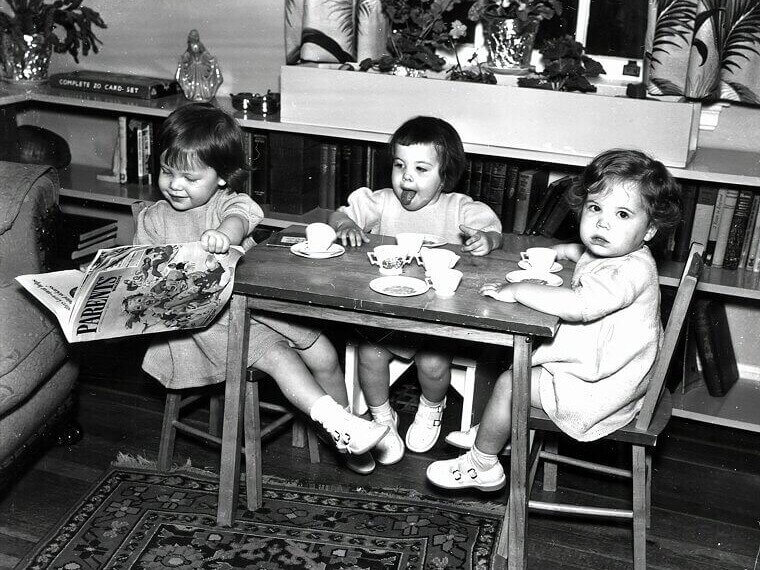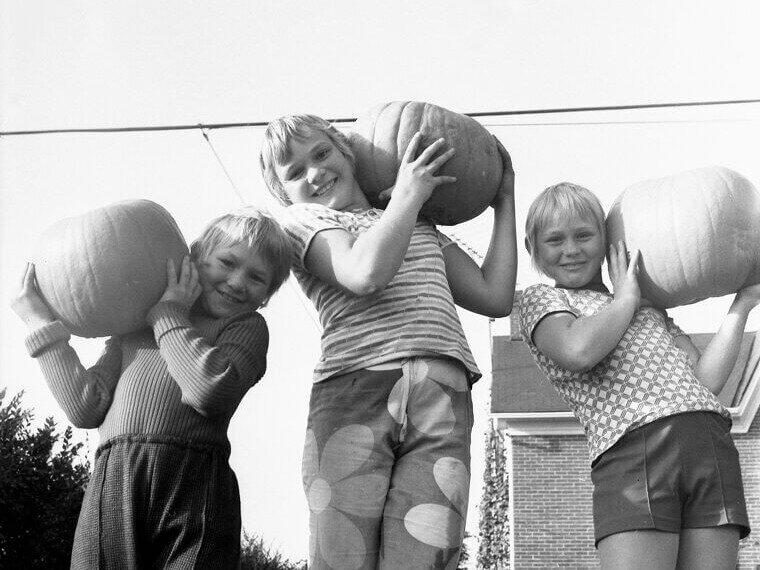Cleaning Windows With Vinegar Solution
Window cleaning meant grabbing newspapers and vinegar spray. Kids wiped streaks and smudges until the glass sparkled. It was a satisfying chore that made rooms brighter. Parents appreciated the clearer view, and kids enjoyed seeing immediate results from their work.
Sweeping the Kitchen Floor After Dinner
Kids in the 1970s knew the broom well. After dinner, someone was always assigned to sweep the kitchen floor, gathering crumbs and stray bits of food from under the table. It was a chore that felt never ending but taught responsibility and teamwork. Parents didn’t ask twice, and kids just stepped in to help. It was part of the nightly routine and a small contribution to keeping the home running smoothly.
Drying the Dishes by Hand
There were no dishwashers in many homes, so drying dishes by hand was a common task. Kids grabbed a towel and took their place as plates, glasses, and silverware rolled down the line from the sink. It was a moment for small conversations or friendly complaints, but the job got done. This little ritual kept the kitchen tidy and helped kids learn the value of teamwork at the dinner cleanup.
Taking Out the Trash Before It Overflowed
Taking out the trash was a must-do chore. Kids learned quickly that trash cans filled up fast, especially in busy households. Carrying out the garbage, often in paper bags that threatened to tear, was a regular assignment. It gave kids a sense of responsibility and kept the house smelling fresh. It was one of those tasks you did without thinking because everyone knew it had to be done.
Raking Leaves Into Giant Piles
Fall meant leaf duty. Kids were sent into the yard with oversized rakes to gather every last leaf into giant piles. The chore often turned into playtime with jumping and rolling, but the work still mattered. Parents enjoyed neatly kept lawns, and kids got the satisfaction of finishing a visible task. Raking was a seasonal tradition that blended responsibility with childhood fun.
Watering the Garden and Flower Beds
Watering the garden was a peaceful chore many kids enjoyed. With a metal watering can or a hose stretched across the yard, they made sure tomatoes, roses, and potted plants stayed alive in the summer heat. It taught patience and care for living things. Kids felt involved in the family’s outdoor space, and the results of their work showed up in colorful blooms and ripe vegetables.
Folding Laundry Straight Out of the Dryer
When the dryer buzzed, kids stepped in to fold towels and clothes. It was a chore that demanded attention, especially when dealing with still-warm fitted sheets that never cooperated. Helping with laundry taught kids how to handle household routines and kept the family organized. The task also brought a cozy feeling, with warm clothes piled high on the couch waiting to be sorted and put away.
Dusting Every Room in the House
Dusting was a chore that touched every corner. Kids wielded old rags or feather dusters to wipe down shelves, picture frames, and TV cabinets. It kept the home looking neat and helped reduce that unmistakable layer of 1970s dust. Although it felt repetitive, kids often worked room by room and enjoyed seeing the immediate difference. It made them feel useful and responsible.
Helping Vacuum the Living Room Carpet
Vacuuming was a shared family task, especially with wall-to-wall carpeting. Kids pushed heavy vacuums back and forth, trying to make those perfect vacuum lines adults admired. It took effort, but it gave them pride to leave the living room looking fresh. The vacuum’s loud hum became part of weekend chores, and kids felt grown up handling such an important machine.
Polishing Wooden Furniture Until It Shined
Furniture polish and soft cloths were staples in many homes. Kids helped keep dining tables, cabinets, and coffee tables glossy and clean. The smell of lemon-scented polish filled the air as they worked. This chore taught attention to detail and respect for the home’s nicest pieces. It was one of those tasks that made the whole house feel refreshed and well cared for.
Washing the Family Car in the Driveway
Saturday car washes were a family activity. Kids helped scrub the car with soapy water, rinsed it with the hose, and dried every window. It was messy, fun, and productive. The family car was a point of pride, and keeping it clean was a group effort. After the job was done, kids often enjoyed a cool spray from the hose as a reward.
Cleaning Their Own Rooms Regularly
Although not every child kept a spotless room, cleaning bedrooms was expected. Kids made their beds, put toys away, and kept clothes off the floor. It taught personal responsibility and helped keep household clutter under control. Parents didn’t negotiate much on this one. A tidy room was a basic rule. Kids learned early that their space reflected their habits.
Setting the Table Every Evening
Before dinner, kids were called to set the table. Plates, cups, forks, and napkins were placed with care. It felt like a simple routine, but it was an important way to participate in family life. Kids learned manners, routine, and the value of helping before the meal. It also brought a sense of anticipation as families came together around the table.
Bringing Groceries Into the House
When parents came home from the store, kids ran outside to grab bags. From heavy cans to cereal boxes, everything needed to be carried in. This chore taught responsibility and teamwork as families restocked pantries together. Kids learned to handle groceries carefully and appreciated how much work it took to feed a household. It was a quick but important task that kept things running smoothly.
Sweeping the Porch and Front Steps
Keeping the front porch neat was part of curb appeal in the 1970s. Kids swept leaves, dirt, and dust off the porch and steps to make the entrance look tidy. It was a small job with big impact, and parents appreciated the pride kids took in maintaining shared spaces. The task became part of regular routine, especially before guests arrived.
Helping Hang Clothes on the Line
Even with dryers available, many families still hung laundry outside to dry. Kids handed clothespins to parents or hung towels and sheets themselves. The sight of crisp laundry waving in the breeze was common. This chore connected kids to slower rhythms of home life and brought a peaceful sense of accomplishment.
Cleaning Out the Family Refrigerator
Every so often, it was time for a full refrigerator cleanout. Kids helped remove containers, wipe shelves, and toss expired leftovers. It was a revealing task that often included mystery items hiding in the back. The process taught cleanliness and organization, and it left families feeling refreshed with a clean space for weekly food storage.
Mowing the Lawn for Allowance Money
Cutting grass was a classic 1970s chore. Older kids took pride in mowing straight lines and keeping the lawn neat. It was sweaty work on summer afternoons but often rewarded with a small allowance. Many kids saw lawn mowing as their first taste of responsibility, independence, and earning money.
Carrying Firewood Indoors for Winter Nights
Families with fireplaces relied on kids to carry firewood inside during cold evenings. The chore taught strength and preparation. Kids stacked logs neatly by the hearth and enjoyed the reward of a warm fire afterward. It was a cozy tradition that made winter feel special and reminded kids how much effort went into keeping homes comfortable.
Shaking Out Rugs in the Yard
Vacuuming was helpful, but rugs still needed shaking out. Kids carried small rugs outside, shook them vigorously, and watched dust clouds disappear into the breeze. The chore was oddly satisfying and produced immediate results. Clean rugs made the house feel fresher, and kids enjoyed the active, outdoor task.
Helping Prepare Vegetables for Dinner
Kids peeled potatoes, snapped green beans, and washed vegetables. Dinner prep was a family activity that brought everyone into the kitchen. It encouraged teamwork and taught kids how to handle food safely. Preparing ingredients together created small moments of bonding and gave kids confidence with kitchen tasks.
Bringing Mail In From the Mailbox
Getting the mail was a simple daily responsibility. Kids walked to the mailbox, gathered letters and catalogs, and delivered them inside. It was a small task that encouraged routine and reliability. The mailbox often felt like a place of mystery and excitement, especially when a fun magazine or colorful postcard appeared.
Organizing the Family Bookshelf
Many homes had well-loved collections of books. Kids helped keep shelves tidy by organizing titles, dusting spines, and arranging everything neatly. This chore gave them pride in maintaining shared spaces and kept the living room feeling orderly. It also encouraged reading as kids rediscovered forgotten favorites.
Cleaning Bathroom Sinks and Counters
Kids often handled simple bathroom cleaning. Wiping sinks, clearing counters, and scrubbing toothpaste spots helped keep the space usable. It taught them the importance of shared hygiene and cleanliness. With a little effort, the bathroom looked refreshed, and parents were grateful for the help.
Organizing the Toy Box or Closet
One of the most personal chores was sorting through toys or closet items. Kids cleared out clutter, folded clothes, and made room for new treasures. It taught decision making and responsibility. Although it could be overwhelming, finishing the task brought a sense of accomplishment and pride in a well-organized space.
Helping With Simple Repairs
Kids in the 1970s often shadowed parents during small repairs. Holding a flashlight, fetching tools, or handing over nails gave them a sense of involvement. They learned basic problem solving and gained confidence working with their hands. These moments created lasting memories and practical skills.
Sorting Cans and Bottles for Recycling
Early recycling programs encouraged families to sort bottles and cans. Kids helped rinse containers and separate materials. It taught responsibility and environmental awareness. The chore felt purposeful, and kids enjoyed being part of a growing movement to care for the planet.
Bringing In Deliveries From the Porch
Whether it was milk, newspapers, or packages, kids grabbed items from the porch and brought them inside. This simple task kept the household running smoothly. It taught kids reliability and awareness of their surroundings. Parents trusted them to handle deliveries responsibly.
Helping Make Beds on Laundry Day
Fresh sheets meant all hands on deck. Kids smoothed blankets, tucked corners, and fluffed pillows. It was a small but important chore that made bedrooms feel welcoming. The crisp smell of clean linens made the effort worth it.
Carrying Drinks and Snacks to Visiting Guests
When company arrived, kids helped greet guests by carrying drinks or snacks. It taught hospitality and social skills. These small tasks made gatherings smoother and gave kids a role in creating a warm, welcoming atmosphere.
Storing Leftovers After Dinner
Kids helped package leftovers into containers and store them in the refrigerator. It kept meals organized and reduced waste. The task taught responsibility and basic kitchen skills. It was another small way kids contributed to family routines.
Sweeping the Garage Floor
Garages collected dust, leaves, and clutter. Kids swept the floors to keep the space usable and tidy. It was a physically active task that produced immediate satisfaction. A clean garage helped families stay organized and ready for weekend projects.
Walking the Family's Dog
Kids took turns walking the family dog, learning responsibility and daily care routines. It was a chore that blended joy with duty. Kids enjoyed fresh air, exercise, and bonding time with their pet while contributing to family responsibilities.
Wiping Down Kitchen Counters After Meals
A clean kitchen always started with wiping the counters. Kids grabbed cloths and cleared crumbs and spills. It taught attention to detail and respect for shared spaces. The task kept the kitchen fresh and ready for the next meal and gave kids an important role in maintaining the heart of the home.
Cleaning Out the Family Car’s Backseat
Daily car rides left crumbs, wrappers, and clutter. Kids were asked to clean out the backseat regularly. It was not glamorous, but it kept the car tidy and taught responsibility. Sorting through forgotten items became a mini adventure. Parents appreciated the help, and kids gained a sense of ownership over the family vehicle’s cleanliness.

